Yellow, orange, red, maybe even green or blue. Black and white filters have been indispensable in photography for decades. Now, of all times, when interest in black and white is so great again and better and better monochrome cameras are coming onto the market, the knowledge about black and white filters seems to be disappearing. And this is prompting a worrying situation…
One day before we were due to go on holiday (where we ended up in Corsica), I received an email from Detlef Stier. He runs a small online shop selling photographic accessories, especially filters (but also Billingham camera bags and other items). I’ve been a customer there for many years and have always appreciated the good personal advice. And his website fotologisch.com (unfortunately closed in Spring 2024) was certainly not just a sales platform. It’s a pity that this great source for useful information has run dry.
A shocking e-mail from a prolific B+W dealer
I’ll quote part of the email (with his permission, translated):
For years, black and white filters have had an almost constantly high share of a good 30% – making them my best-selling filter types. Even UV and Käsemann polarising filters can’t keep up with them. I put this down to the constantly increasing interest in black and white photography (mainly in analogue form).
A few days ago, I came to realise that my statistics in terms of sales volumes of B+W black and white filters do not match the manufacturer’s statistics. According to Schneider Kreuznach, there is less and less demand. Quote from a reply from the manufacturer: “This is actually because we have virtually no more demand. Only Leica Monochrom users are making enquiries now and then.”
The reaction is somewhat extreme: Schneider Kreuznach, manufacturer of B+W filters, will therefore discontinue the production of black and white filters. They will be sold while stocks last.
How so? More B&W photography yet less demand for black and white filters
Why are sales so low (worldwide in the case of Schneider Kreuznach)? Are there so many filters in circulation and are they always being passed on? Hardly likely. Are the filters from B+W not competitive? Even though they offer excellent value for money? For example, the filters from Heliopan (also high quality) are in the same price range and the equivalent Leica filters are (surprise!) twice as expensive.
Or is there rather a kind of brain drain at work? Is the knowledge of the importance of such filters vanishing? Do many people who use analogue B&W films or a digital Leica Monochrom (not forgetting the Pentax K3 III Monochrome) simply no longer know about them? Have they lost or never built up the competence of proper filter use? Is Detlef Stier’s clientele a selection of “keepers of ancient knowledge?” He does not have the answer.
More disturbing news from the filter sector…
And even more disquieting is an update from Mr Stier on 27 October 2023: The German manufacturer Heliopan as a possible alternative for the purchase of filters could also soon be history, as it is “in liquidation”, see imprint of the company website. Jörg-Peter Rau also received a confirmation from his dealer, Lichtblick in Konstanz. He adds on this topic: “Sad news, Heliopan black and white filters were of good quality, and it was the only remaining source for exotic sizes such as 24mm for the Rollei 35 or Series VII and Series VIII for the wide-angle Summiluxes.”
Incidentally, I also assume that most readers of this website are familiar with the function of colour filters in B&W photography. But even for those who photograph exclusively digitally, this is not necessarily active knowledge. That’s why I’m adding a “refresher course”.



Black and white filters: The basics
The human eye sees colours in a spectrum from 380 to 780 Nanometres, whereby films or sensors can also be sensitive below (ultraviolet) and above (infrared) these limits. This can be troublesome in conventional photography, hence UV and IR filters. A black and white film or a monochrome sensor “translates” the visible colours into shades of grey; ideally, each colour should have a different shade (tonal accuracy). Today, all films and sensors have this “panchromatic” property, unless expressly stated otherwise. Exceptions are, for example, the Ilford Ortho Plus, an orthochromatic film that is mainly sensitive in the green and blue range. Red is reproduced almost black. The Fuji Neopan Acros II shows, to a much lesser extent, such tendencies.
Think twice: an orange filter cuts down… blue
A visual representation that translates the coloured reality into grey tones can appear very dull because the grey tones of very different colours can be very similar. Additionally, there are large differences in brightness values (for example, the sky above a forest), which make correct exposure difficult. Black and white filters allow light in the filter’s colour (and the neighbouring frequencies) to pass through while inhibiting the complementary colour. The concept of complementary colours is based on the Helmholtz colour circle. This effect is used to more clearly define the grey tones of certain colours (depending on the filter colour). It also helps to adjust brightness and to increase contrast. So, black and white filters are an important stylistic means in photography that you should not do without.
The file of a colour image leaves room for tweaking, a B&W file less so
When converting digital colour files to B&W, you can selectively adjust the RGB channels in post-processing to achieve a similar result. However, you should be circumspect and not pull too hard on the sliders. Otherwise, the result will look rather surreal, and you might also catch unwanted artefacts. Neither the B&W analogue photographer nor the one with the monochrome sensor has the luxury of colour channels. They must make do with black and white filters. To influence grey values, physical filters must be placed in front of the lens. Obviously, you must have an idea what colours you want to manipulate and to what extent before shooting. This needs knowledge and experience. But it is worthwhile: What the filters achieve can hardly be made up for in post-processing.
Light attenuation through black and white filters
The filters vary in strength. They attenuate the incident light, so the exposure must be adjusted accordingly. Manufacturers issue transmission curves for each filter, which show the wavelength at which light is blocked or transmitted. However, it is important to remember the respective filter factor. It indicates by “how many times” the amount of light is reduced. Filter factor 2 means a reduction of one f-stop, 4 means (2×2) two f-stops and 8 (2×2×2) produces three f-stops less light. This is critical with external exposure metering.
But even with TTL metering (where you could assume that this is counted in by principle), there are extension factors. For example, Leica states in the operating instructions for the classic M6 (1984) that the film speed for the light meter is halved with orange or red filters. So with an ISO 400 film, set the dial to ISO 200 as long as the filter is in place. With my M10 Monochrom, I make an exposure correction of 1-2 EV (depending on the subject) upwards for the red filter, but this is not necessary for yellow and orange.
Colours of black and white filters…
…are discussed here now in the order in which they appear in the colour spectrum. Each filter colour has its transmission curve which indicates from which nanometre threshold the filter colour becomes transparent. For yellow, orange, and red, the principle is simple: the transmission curve rises steeply slightly before the wavelength of the colour and remains transparent for everything above it.
For example: the curve for a medium yellow filter rises steeply from 450nm. But although blue-green is weakened, it is not completely blocked, like everything below 450nm. Orange, then light and dark red rise correspondingly further up in the spectrum and inhibit more colours below the wavelength range in which the transmission begins. This immediately explains why the filter factors then increase: Less and less light gets transmitted.
The transmission curves of blue and green filters are less boring. They transmit best their respective colour, but then drop again significantly above in the orange and red range. It has to be; otherwise we get into a conflict with the model of inhibition of the complementary colour.
Black and white filters in detail: blue
Inhibits yellow, orange and red tones. The sky is whitened, haze is intensified because, unlike all other filters, it does not absorb UV radiation (Stefano Strampellis suggestion in his comment on messsucherwelt.com: in fog, if you want to intensify the effect). It is more suitable for taking pictures in (yellowish) artificial light and improves the contrast. Be careful with portraits, OK for very fair-skinned people, but all kinds of skin blemishes are emphasised. Entirely different application: Compensate for orange mask when photographing colour negatives.
Black and white filters in detail: green
Improves the tonal value separation of all green tones, therefore suitable for images with large proportions of leaf green. Inhibits orange and red tones. Even scarier for portraits than blue filters. More for dermatologists.
Black and white filters in detail: yellow
Darkens blue sky a bit, slightly increases cloud contrast and reduces atmospheric haze, differentiates plant green, lightens skin tones, softens blemishes on the skin.
Black and white filters in detail: orange
Has all the characteristics of yellow, only stronger. The sky gets darker, cloud contrast clearer, skin tones smoother and lighter.
Black and white filters in detail: red
The characteristics of orange are topped, once again, more or less strongly (depends on what red filter is used). The sky (with clouds) becomes “dramatic” (in common parlance). The blue sky becomes very dark, and we see a strong tonal separation with a “graphic” effect. Skin tones become waxy, lips white.
Black and white filters in detail: infrared
Even if I am the first to extend the series upwards, this is a logical consequence. Because if you look at the transmission curves of an IR transmission filter, this is nothing other than the continuation of the colour filters into the spectrum of non-visible light. The curve is congruent with yellow/orange/red, only shifted significantly further up in the spectrum. The effect of the filter is like “red on steroids”, but what is special is the reproduction of leaf green: chlorophyll emits a lot of infrared light, so all plant green becomes very bright (“wood effect”).
Note, if you want to use this effect in film photography, you also have to use a film that is sensitive in this area, e.g., Ilford SFX. There are “mild” infrared transmission filters that still allow some visible light to pass through, but of course, you still end up with massive filter factors. I would specify the RG715, which I usually use, with 32 to 64. That is, 5 to 6 f-stops depending on the sunlight.
Black and white filters: even more detail
There are still gradations of all black and white filter. For example. I still have a “light yellow” and a “reddish orange” from Zeiss. From B+W there is light and dark red, Heliopan (unfortunately, no longer available, see above) also has various intermediate colours. There are also infrared transmission filters of different strengths.






In the gallery, top row from left to right: no filter, green filter, blue filter (all three not very relevant for this scene), bottom row: yellow, orange, red filter (dark). You select according to your taste. All images have the same tonal value settings (in LR), the only difference is the filter in front of the lens! Note the increasing vignetting in orange and red.
Filters in my practical use
Even if you would rather not burden yourself with changing filters, I would actually say that at least a yellow filter belongs on a black and white photographer’s lens. I have photographed the theatre plays of the “Canaillen-Bagage” several times, and I always used a filter.
My personal “filter to go” is the orange one. I find its enhancement of contrasts to be just right for landscape photography, and it is not out of place in cities either. When Detlef Stier got in touch the day before our holiday, I decided to perhaps take some sample pictures with a filter (wherever we might end up). And I instinctively grabbed the orange filter. Originally, I wasn’t planning to take any other camera than the Q3, but then the M10 Monochrom came along. However, I carried it with me just once on a hike, on the cliffs of Bonifacio. I also took an infrared filter with me.



In my work, I rarely use a red filter, but I actually like the high-contrast images it produces. I would probably apply this filter more often if I hadn’t come up with my infrared workflow. It enhances extreme contrasts and “dramatic skies” in landscape shots even more. Red filters are also good for architectural shots, and the same applies to infrared.
Green or blue filters have no practical significance for my needs. However, I have discovered an entirely different use for the blue filter: when photographing colour film negatives, I use it to neutralise most of the orange mask.
Conclusion
If you don’t use black and white filters, you are wasting a lot of potential. In fact, you can miss the opportunity for a specific rendering that cannot be replaced by anything in post-processing. The filter colours you want to have on your radar are definitely yellow, orange, and red. In the past, people used to play a lot with intermediate colours (light, medium, dark yellow, etc.) and those who feel called to do so for their “fine art” photography may still do so today. But: “Früher war auch mehr Lametta” (there used to be more tinsel on the Christmas tree), as the famous German comedian, Loriot, once said in ridiculing blind nostalgia.
Messsucherwelt.com, Claus Sassenbergs’s own rangefinder blog (in German)
More in English from Claus Sassenberg
More on film photography
More on Leica Monochrom cameras
Want to contribute an article to Macfilos? It’s easy. Just click the “Write for Us” button. We’ll help with the writing and guide you through the process.

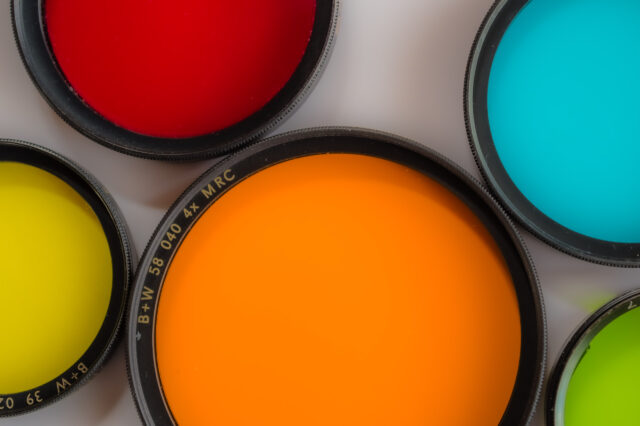
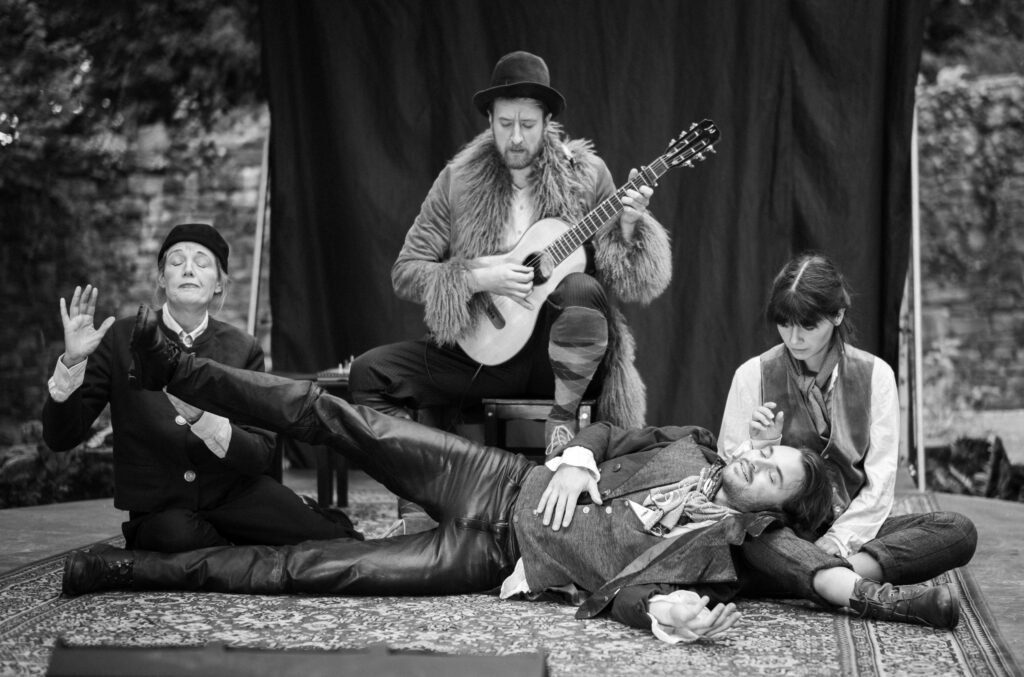
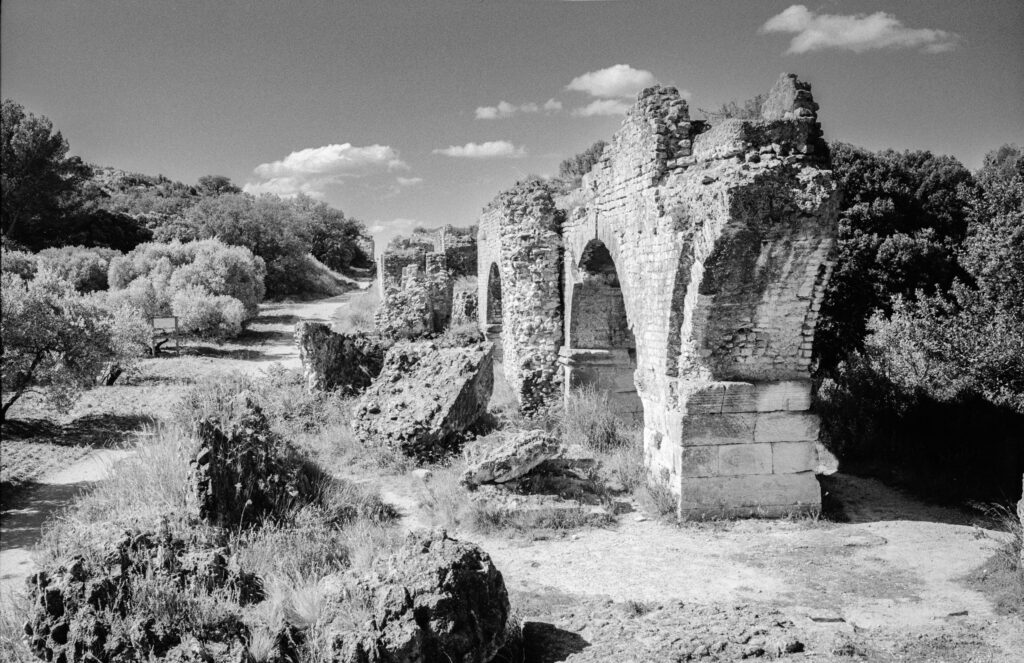
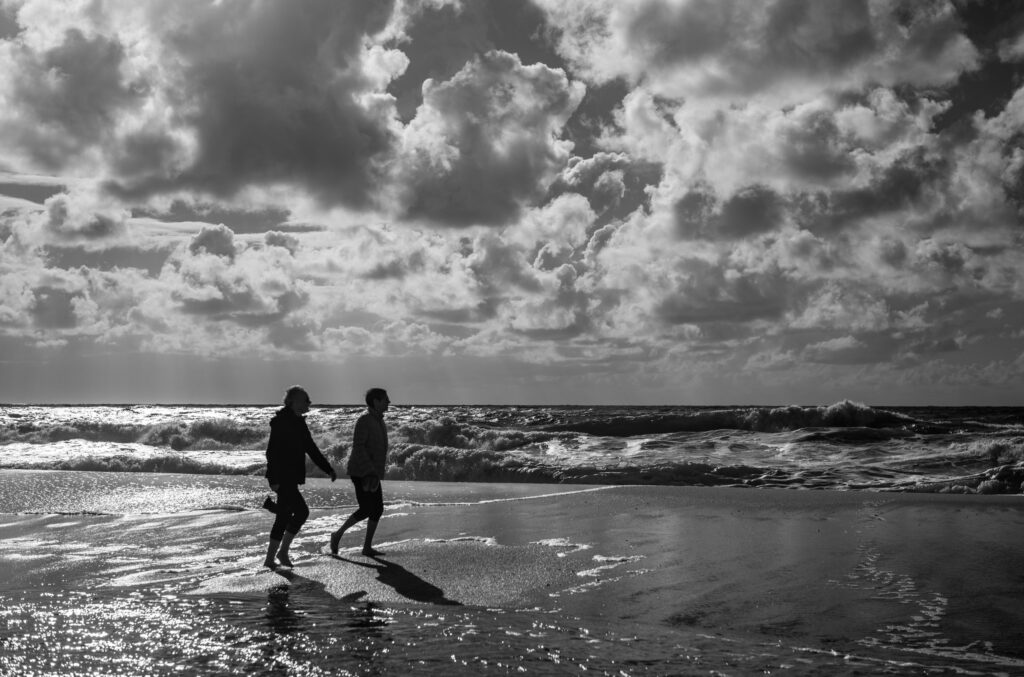
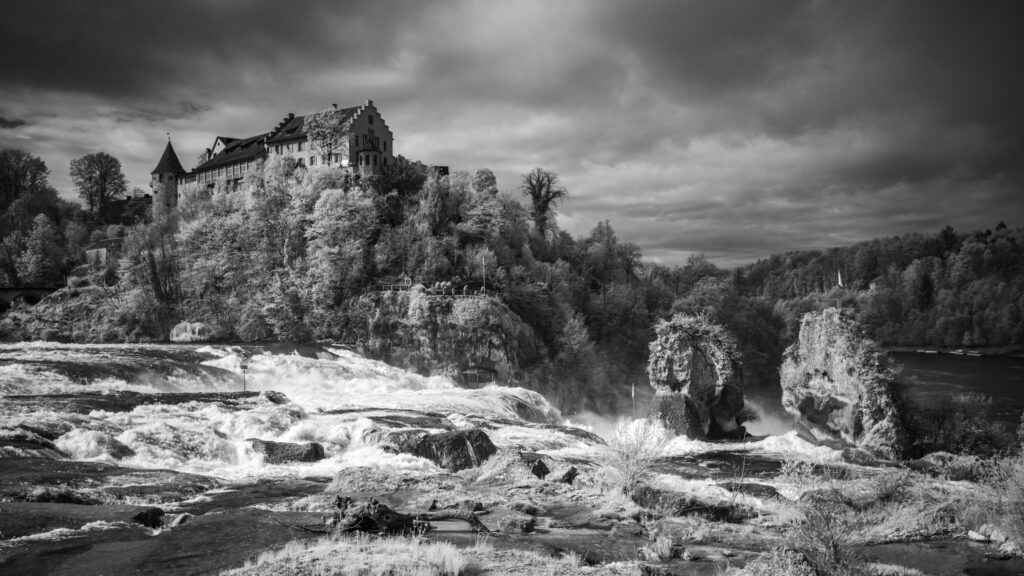
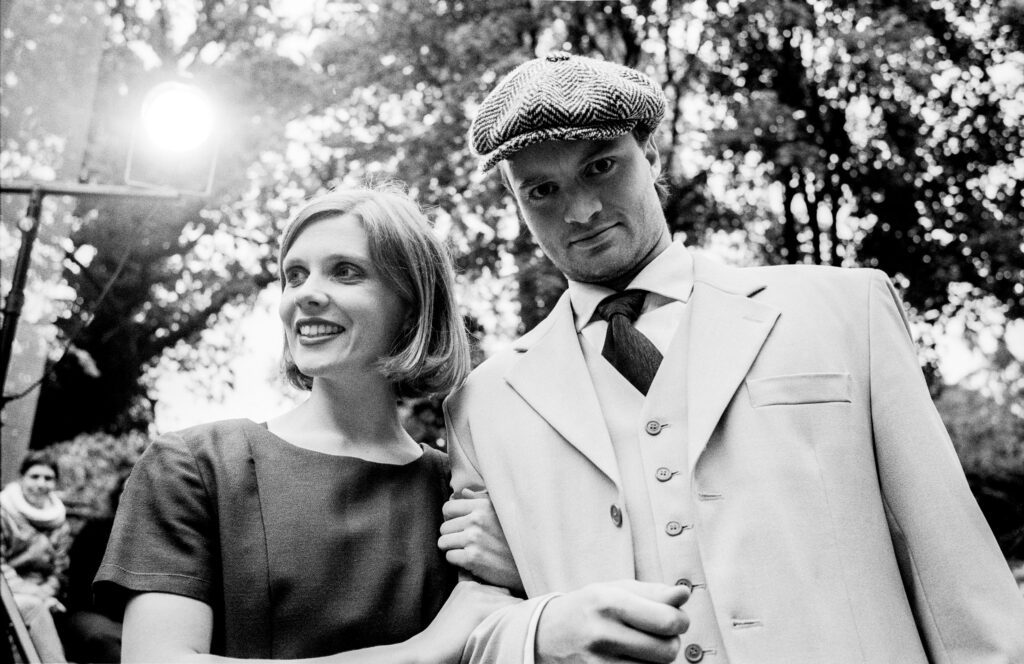
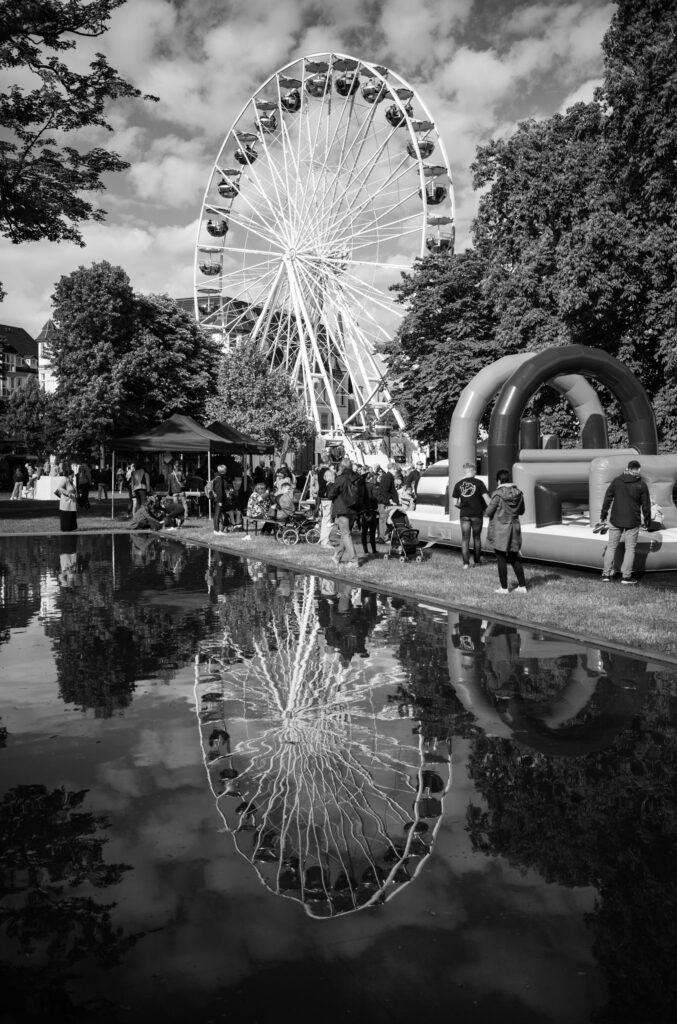
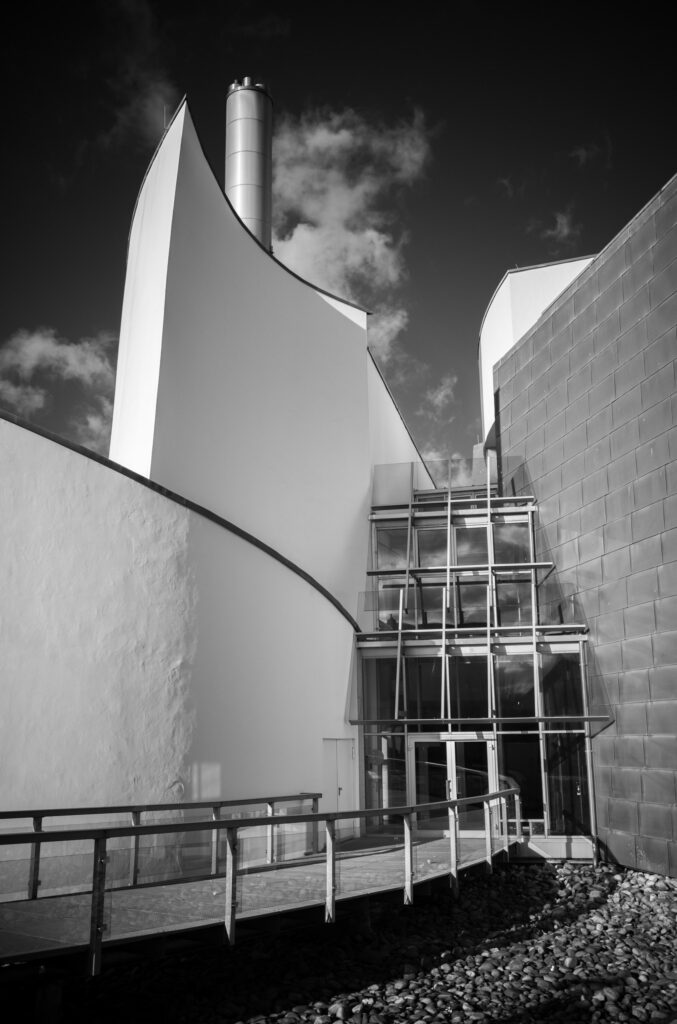




This is a great article – thank you Claus.
For me, the value of B&W colour filters is magnified on mirrorless cameras as I can set the camera to show B&W on the EVF when I shoot JPG & RAW. I can then guage the effect of filters in “real time”. Even if I still have a RAW colour image to use later – I prefer to get my pictures right SOOC as it saves so much wasted time in the “digital darkroom” !
Hullo Keith
On my Nikon SLR’s I used to increase exposure by 3 stops On Digital cameras I would experiment from 22/3 upwards
Hi Claus, I just picked up a Hoya ‘IR-pass’ filter, for use with a Q2 Monochrom. As I expected, it is completely opaque, and of course, when mounted on the lens, there is nothing to be seen through the viewfinder. I have yet to experiment with it, but I am assuming I will have to do some ‘guesstimating’ in order both to compose the photo and achieve a correct exposure. I plan to set aperture and shutter speed manually, review after each shot, and iterate until the image looks good. Any advice you have about getting the best from this filter would be much appreciated! Cheers, Keith
Thank you, Claus for a very interesting article I have been trying to educate some friends on the benefits of B+W and your useful comparative pictures really helped
Yes, I agree, I think knowledge of filters is being lost. And this is very unfortunate. For many years, I liked the B+W filters, but they had already changed their styles and reduced their range for me too much compared to Heliopan. But even Heliopan has been reducing their range too much, and I did not know about the liquidation. This is a sad state for filters. Tiffen still makes a fairly large range of filters, but not in brass mounts, and as far as I know not in bayonet mounts (for Rolleiflex and Hasselblad).
The yellow-green or gelb-grün filter has been missing for far too long. This used to be one of the standard filters, used by many all the time, and also a favorite for portraits.
Knowledge in the use of filters for color reversal film also seems to be disappearing. The regular use of the KR series (KR 1.5, KR 3, etc.) or 81 series (81A, 81B, etc.) of filters to warm and correct the cool tones often dominating in the color reversal films.
Thanks for a great set of B&W images. I used to have filters in analog times. However with modern processing softwares and apps are not as mandatory as before. In my computer of prehistoric era its very basic processing program includes yellow, orange and red filters.
Hi Claus, many thanks for this terrific article. I have a set of yellow, orange, and red B+W filters for my monochrome camera, but have yet to develop much expertise in their use. Your overview was extremely helpful! Prompted by your article, I just ordered an ‘IR-pass’ filter. I doubt if I can pull off the kind of shots that Dirk posts with his IR-converted sensor, but I am looking forward to experimenting with it. All the best! Keith
Interesting, as I have sets of filters that I am about to sell on ebay that are in mint or new condition. I just sold my monochrom as I cannot carry it with another camera due to injuries from a car accident. It was a tough decision but reality set in. Colour filters are essential for black and white to adjust the tonality. A yellow filter is essential for general use and then orange or red to increase dramatic effect.
Very helpful summary, and the news from B+W and Heliopan is disconcerting. When I first got my M10 Monochrom, I made sure that (or ordered from eBay) I had at least yellow filters to fit all my lenses that I might use. In general, I keep a medium yellow filter on all such lenses, the only downside to which is taking one of them for a color digital camera and now remembering to remove the filter!
In winter, which seems like half of the year here in Vermont, I find less use for color filters due to it being very monochrome outdoors and of minimal use indoors except for skin tones. Also, when I am running lens tests (and I hope there will be a new one coming soon here) I do not want to muddy the waters by adding a filter.
Second hand has been mostly my source for filters. It seems like such will be around for a long time, as filters don’t disappear. But perhaps the Chinese will oblige us if the demand is there.
Ed
Excellent article!
I use an orange filter for my M3 +Summicron Rigid with ISO 400 BW film. Good for the image, and also the max speed of the shutter is only 1/1000s.
I also use an M10M and use yellow and orange filters on several lenses, much better skies!
I also have a 21 Super Elmar that renders beautifully with a red filter. Dramatic!
Not really relevant here, but if shooting in colour, a blue filter stops bluebells turning purple.